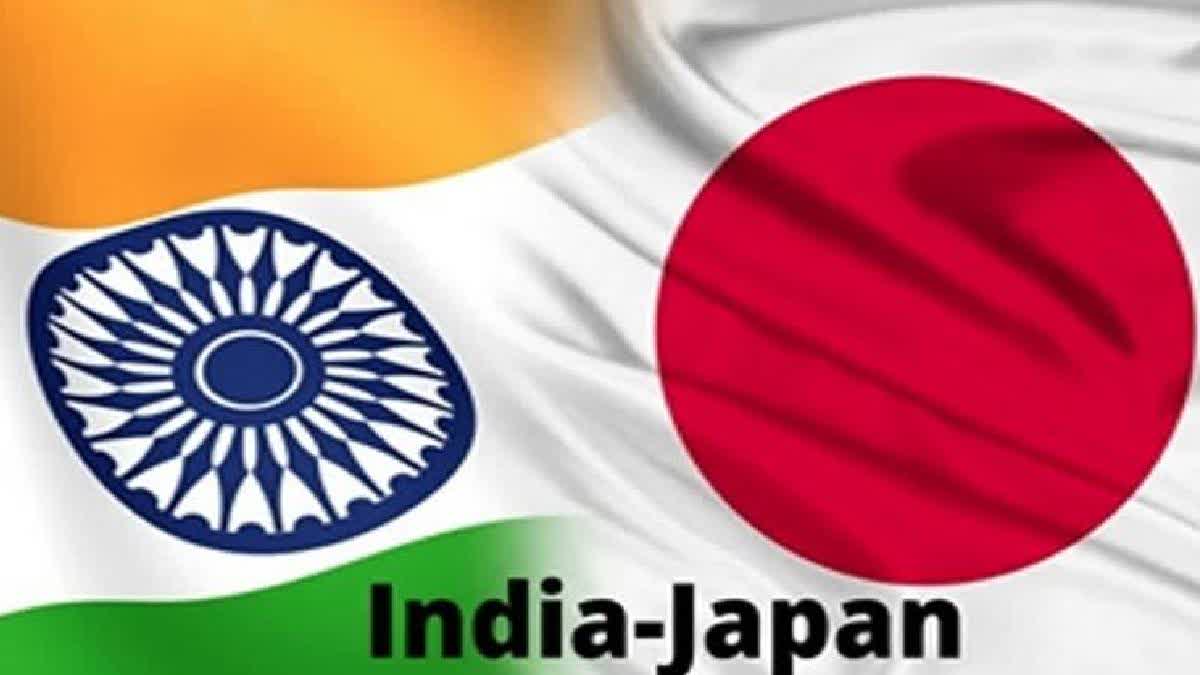New Delhi: The Northeast is a key aspect of the cooperation between New Delhi and Tokyo, External Affairs Minister S Jaishankar said when he addressed the 2nd India-Japan Forum meeting earlier this week during the course of Japanese Foreign Minister Hayashi Yoshimasha’s visit here. During his address at the Forum meeting, Hayashi referred to the organic linking cooperation between development in the northeastern region of India and efforts in the Bay of Bengal region, as well as initiatives in northeastern India.
“I think Japan has had a very powerful impact actually on manufacturing in India, on our urbanisation process, on the organisation of logistics in this country, and as Minister Hayashi pointed out, also has been a source of support in the Northeast and that's one area not just in the Northeast but beyond the Northeast to neighbouring countries,” Jaishankar said.
The India-Japan Forum was launched with the purpose of bolstering cooperation, leveraging opportunities, exchanging ideas, building mutual trust and developing a joint agenda for future cooperation between New Delhi and Tokyo. So, why is the Northeast so important in the ties between India and Japan? Two reasons: connectivity in Southeast Asia and security in the Indo-Pacific region. The Indo-Pacific region stretches from the east coast of Japan to the east coast of Africa. Both India and Japan agree that the 10-nation Association of Southeast Asian Nations (ASEAN) regional bloc has to play a central role in the peace and prosperity of the region.
India and Japan share a ‘Special Strategic and Global Partnership’. In December 2017, India and Japan established the Act East Forum, which aimed at providing a platform for India-Japan collaboration under the rubric of India’s Act East Policy and Japan’s Vision of a Free and Open Indo-Pacific. The Forum identifies specific projects for economic modernization of India’s Northeast such as those pertaining to connectivity, developmental infrastructure, industrial linkages as well as people-to-people contacts.
Under the Act East Policy, the Northeast, which shares historical and traditional bonds with the ASEAN region, is seen as the springboard for India's increasing engagements with Southeast Asia and for this New Delhi has roped in Tokyo in a big way. Japan's role in development work in the Northeast is also expected to boost connectivity between the member states of the BIMSTEC sub-regional grouping.
The Bay of Bengal Initiative for Multi-Sectoral Technical and Economic Cooperation (BIMSTEC), which came into existence in 1997, comprises seven countries lying in the littoral and adjacent areas of the Bay of Bengal – Bangladesh, Bhutan, India, Myanmar, Nepal, Sri Lanka and Thailand. Membership in the bloc allows India to engage more with the extended neighbourhood in Southeast Asia under New Delhi's Neighbourhood First Policy via northeastern India. This will also help keep in check China's growing influence in the region through Chinese President Xi Jinping's pet Belt and Road Initiative (BRI) project.
Various projects involving over Rs 19,100 crore of assistance by the Japan International Cooperation Agency (JICA) are being implemented in the Northeast. These include the National Highway between Shillong and Dawki, the National Highway between Tura and Dalu – both in Meghalaya – and the one between Aizawl and Tuipang in Mizoram. There will also be a corridor linking Gelephu, the border area between Assam and Bhutan, and Dalu, the border town between Bangladesh and Meghalaya, in collaboration with the Asian Development Bank (ADB).
This will include the Dhubri-Phulbari bridge project across the river Brahmaputra, which will be the longest river bridge in India when completed, as part of the Northeast Road Network Connectivity Improvement Project. Development of main district roads (MDRs) and other district roads (ODRs), which will have positive socio-economic effect is also a key part of these infrastructure projects. Other infrastructure projects funded by JICA like the Matarbari port in Bangladesh are expected to provide an entry point for Indian business to establish a foothold in Southeast Asia.
In March 2022, JICA signed a loan agreement with the Government of India to provide Rs 1,492 crore for the Northeast Road Network Connectivity Improvement Project for the National Highway between Khowai and Sabroom in Tripura. Biodiversity conservation and forest management projects are also part of JICA’s developmental assistance in the Northeast. These include the Sikkim Biodiversity and Forest Management Project, the Nagaland Forest Management Project, the Project on Capacity Enhancement for Sustainable Agriculture and Irrigation Development in Mizoram, the Project for Sustainable Catchment Forest Management in Tripura, and the Project for Community-based Forest Management and Livelihoods Improvement in Meghalaya.
Also Read: ISRO forms study group for Indo-Japan moon mission
The Japanese agency is also assisting in the development and management of water resources in the Northeast. These include the Guwahati Water Supply Project in Assam and the Project for Renovation and Modernisation of the Umiam-Umtru Stage III Hydroelectric Power Station in Meghalaya.
Japan's engagement in the northeastern region has fostered a broader framework of cooperation in the Indo-Pacific region. The partnerships and collaborations formed through development projects have helped build trust and confidence between Japan, India, and other countries in the region. This trust-building process is essential for addressing common challenges such as maritime security, disaster response, and sustainable development.



